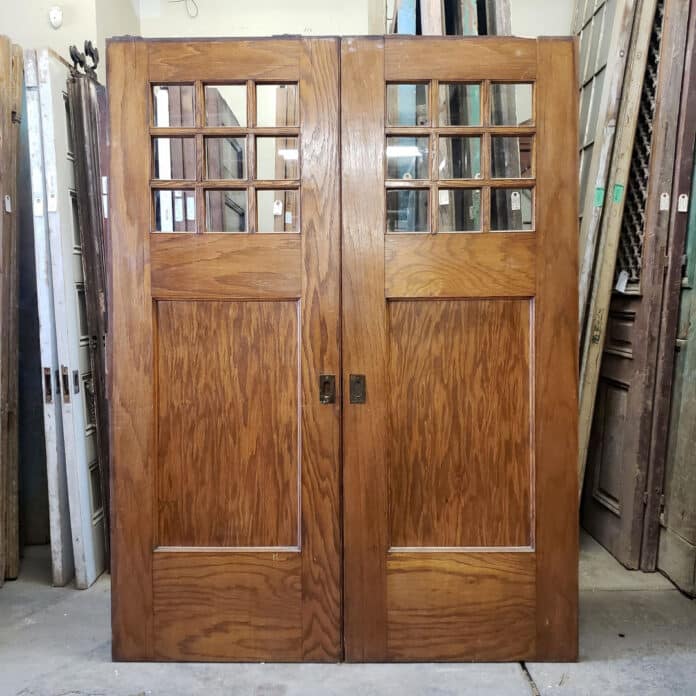In the world of interior design, where solutions to save some space meet artistic appeal, pocket doors are there as an ageless invention. These undistorted sliding doors fit smoothly into the wall, giving you more than just an applicable solution for space bounds. They simply stand for a combination of functionality and style.
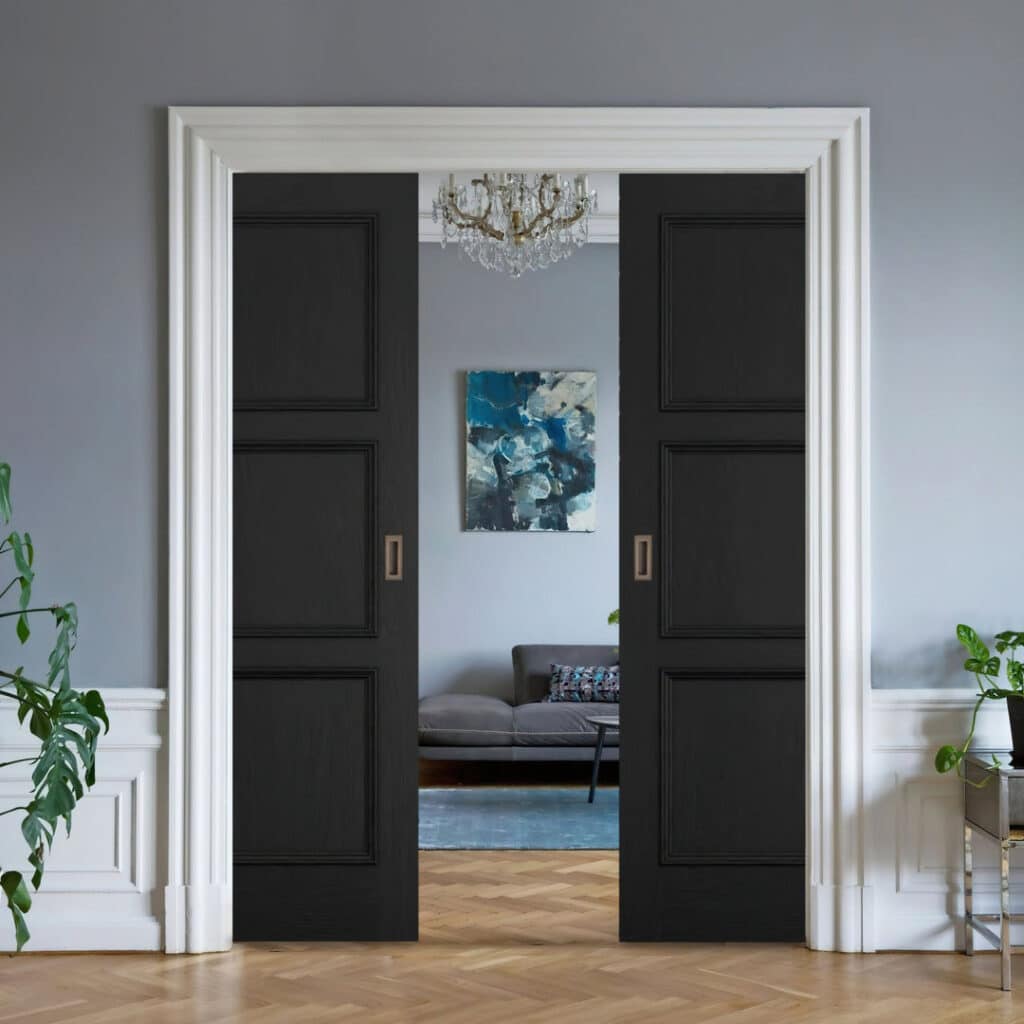
Join us as we explore the fascinating attraction and mobile applications of pocket doors. We’ll be revealing how they lift the surrounding of any space while maling use of both form and function.
Read Also: 20 Classy Two Colour Combinations for Bedroom Walls
What are Pocket Doors?
Pocket doors are doors that slide sideways on tracks. When you completely open them, they slide into a space inside the wall, so you can’t see them. These doors saves space because they don’t require room to swing open like normal doors.
They’re called “pocket” doors because they get slided into a pocket in the wall. People use them in small spaces or where a swinging door would get in the way.
Pocket Doors vs Barn Doors
Pocket doors and barn doors are both types of sliding doors, but they have some key differences:
1. Operation:
- Pocket doors slide into a hidden space inside the wall when you open them, so they don’t take up any room in the room.
- Barn doors slide on a track above the doorway, staying visible even when they’re open or closed.
2. Space-saving:
- Pocket doors are very good for making small rooms or areas with not too many space look bigger. They have no need for any additional space to swing open like normal doors.
- On the other hand, barn doors also save space in comparison to normal doors, but they make use of some added wall space close to the doorway for the panels of the door to slide open smoothly.
3. Aesthetics:
- Pocket doors will give you a smooth and moderate look when closed. This is because, they fade into the wall, creating a clean and unnoticeable appearance.
- Barn doors give the surrounding a rural or developed charm to interiors with their open hardware and see-through door panels. They can also work as a decorative factor in addition to the purpose they are built to serve.
4. Installation:
- Installing pocket doors involves creating a cavity within the wall to accommodate the door when open, which can be more complex and may require professional expertise.
- Barn doors are typically easier to install since they mount directly onto the wall surface with a track system, although proper alignment and hardware installation are still important.
5. Accessibility:
- Pocket doors can be beneficial for individuals with mobility challenges since they eliminate the need to maneuver around a swinging door.
- Barn doors may not be as accessible for individuals with mobility issues since they require manual sliding along the wall surface, which could be more difficult for some people.
While both pocket doors and barn doors offer space-saving benefits and a unique aesthetic appeal, they serve different purposes and are suitable for different architectural styles and preferences. Pocket doors are ideal for maximizing space and achieving a minimalist look, while barn doors add character and visual interest to interiors.
Related: 10+ Pink Two-Colour Combination for Bedroom Walls in 2024
How Much Does Installing a Pocket Door Cost?
The cost of installing a pocket door varies, depending on quite a number of factors, including the type of material you use. The cost of labor is also considered, and any additional change you need for your specific space.
On average, the complete cost for materials and installation normally ranges from $500 to $1,500 for each door. However, this cost can go up depending if there intricacies such as needing to remodel the wall structure.
Or it can be additional features like soundproofing or custom finishes that you desire. It’s best to talk to a contractor or a home improvement specialist to get a more accurate estimate based on your personal needs and circumstances.
What Doors Can Be Used as Pocket Doors?
There are different types of doors that can be used as pocket doors, including:
1. Wooden Doors:
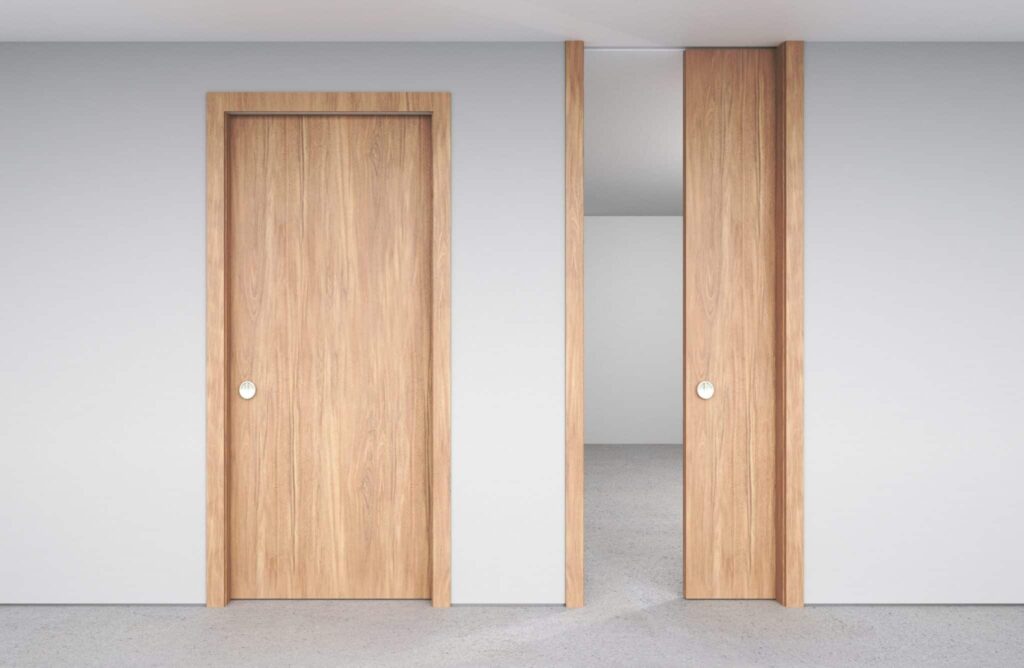
Traditional wooden doors can be modified to be used as pocket doors. You can get them in different styles, finishes, and wood types to suit various interior designs.
2. Glass Doors:
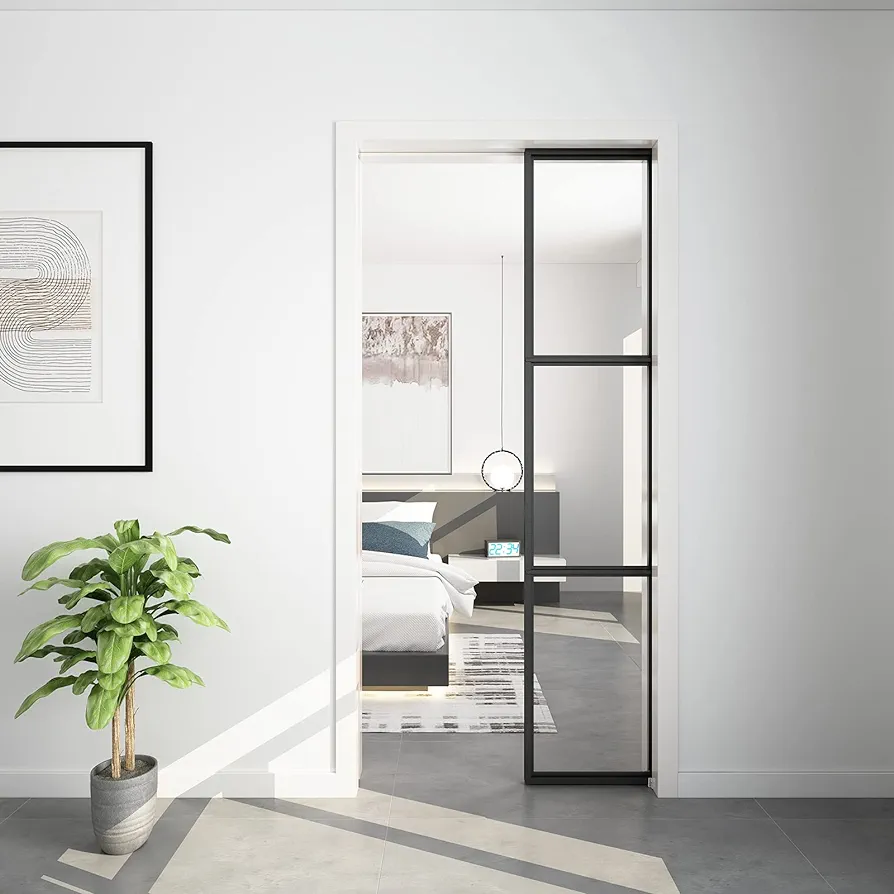
Glass pocket doors can give a new and exquisite touch to interiors while giving room for natural light to stream between spaces. They are often used in current or moderate designs.
3. Panel Doors:
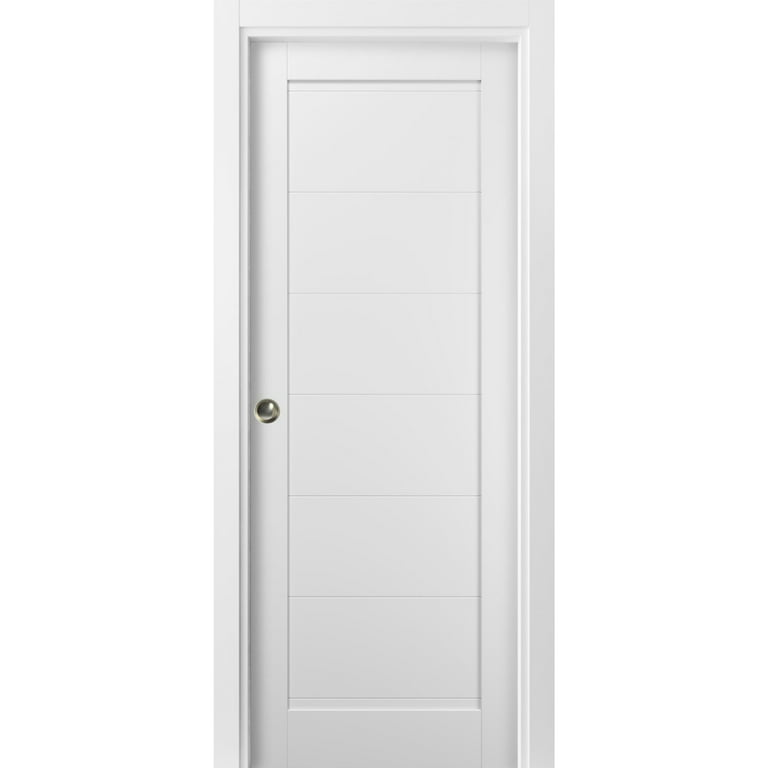
Panel doors, which has raised or concave panels, can be used as pocket doors to complement traditional or changing interior styles.
4. Flush Doors:
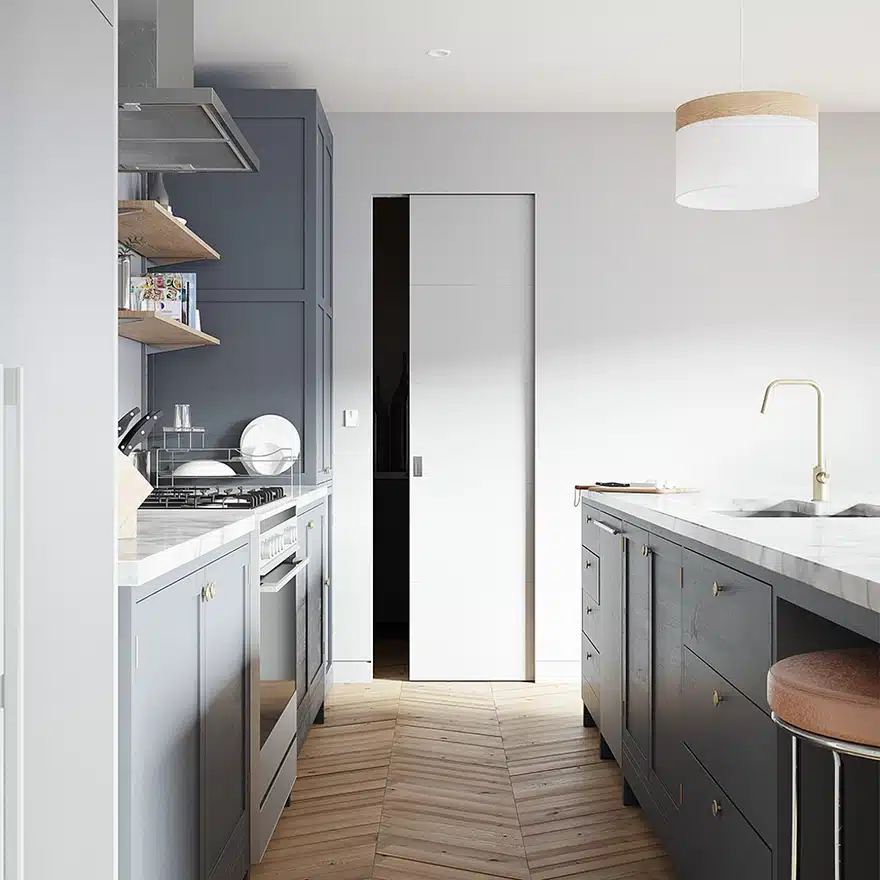
Flush doors have a smooth and flat surface without any raised or recessed panels. They provide a sleek and minimalist appearance and are suitable for modern or minimalist interiors.
5. Barn Doors:
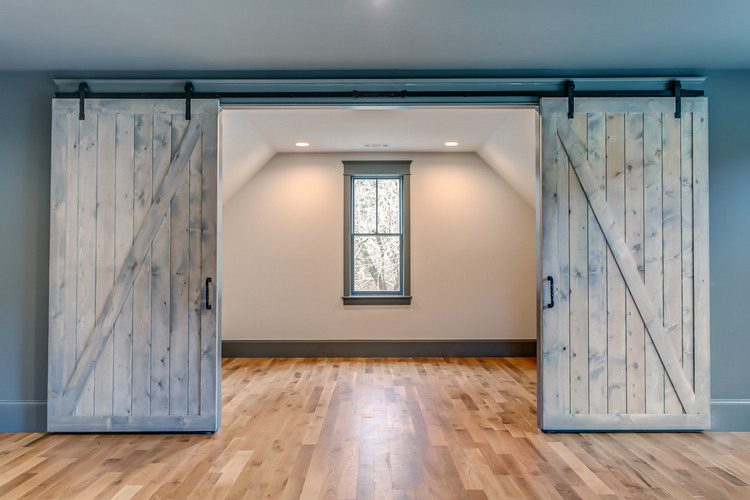
While typically installed as sliding doors on the exterior of the wall, barn doors can also be adapted for use as pocket doors if the wall space allows for the door panels to slide open without obstruction.
6. Custom Doors:
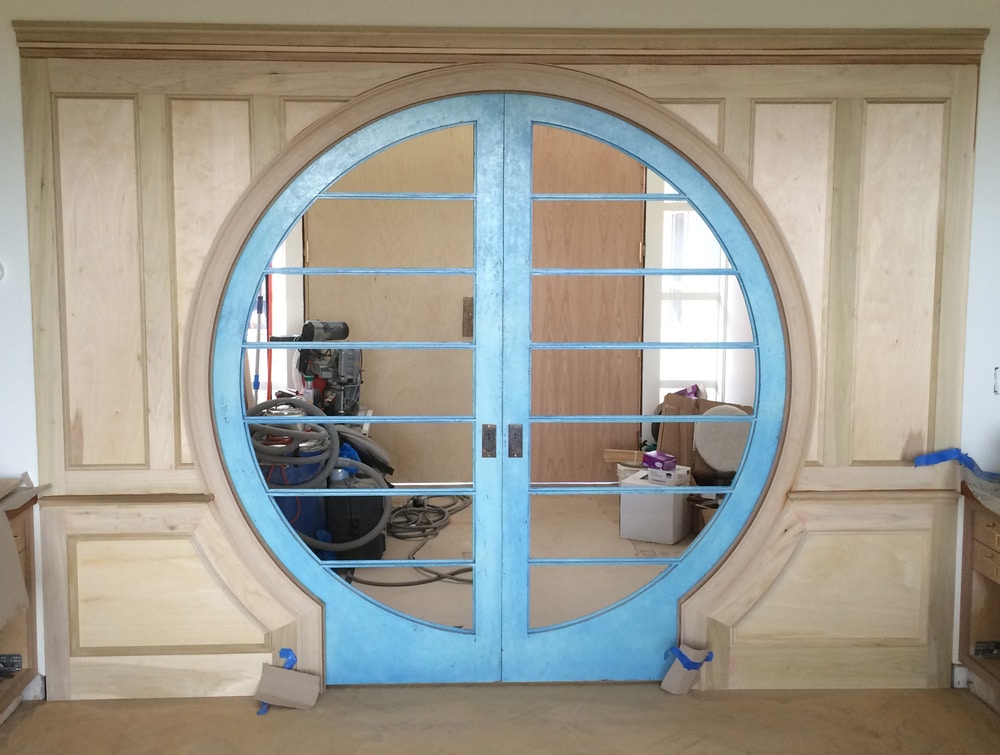
For unique or specialized design requirements, custom-made doors can be fabricated to function as pocket doors. This allows for flexibility in choosing materials, dimensions, and design features to suit specific preferences and architectural styles.
When selecting a door for use as a pocket door, it’s important to consider factors such as the door’s dimensions, weight, and compatibility with the pocket door hardware and track system. Additionally, ensure that the chosen door complements the overall aesthetic and design of the space in which it will be installed.
Hardwares for Pocket Doors
Several types of hardware are used for pocket doors to ensure smooth operation and proper functionality:
- Track and Rollers/Guides: The track is mounted above the doorway and provides a path for the door to slide open and close. Rollers or guides are attached to the top of the door panel and ride along the track, allowing the door to move smoothly. These components are essential for the sliding mechanism of pocket doors.
- Door Pulls: They are handles or knobs attached to the door panel, which gives users the room to easily hold and slide the door open or closed. They are made in different styles and finishes to add an extra touch to the door design and general aesthetic of the space.
- Door Locks: You can install door locks to give you privacy and security when the pocket door is closed. Selections include privacy locks, which keeps the door from being opened from the outside, and passage locks, which allow the door to be locked or unlocked from both sides.
- Door Guides: Door guides that are placed on the floor may be used to prevent the base of the door panel from tripping out of alignment as it slides along the track. This helps keep smooth and stable movement of the door.
- Soft-Close Mechanisms: Soft-close mechanisms can be installed to make sure the pocket doors don’t slam shut when closed. These device gently slow down the door as it gets to the closed position, taking down noise and impact.
When you’re deciding on hardware for pocket doors, it’s important to make sure it is compatible with the size of the door, weight, and design. In addition, take a look at factors such as durability, installation, and beauty appeal. This will help you to choose the most suitable hardware for your particular needs and preferences.
What Room Spaces can a Pocket Door be Installed in?
Pocket doors can be installed in various rooms and spaces throughout a home or commercial building, including:
Bedrooms: Pocket doors are commonly used in bedrooms to save space and create a seamless transition between areas. They can be installed for access to closets, ensuite bathrooms, or as room dividers for added privacy.
Bathrooms: Pocket doors are ideal for bathrooms, particularly in smaller or narrow spaces where swinging doors may be impractical. They provide privacy without taking up valuable floor space.
Closets: Pocket doors are frequently used for closet doors, as they allow easy access to the contents of the closet without obstructing the surrounding area. They are especially useful in tight spaces or areas with limited clearance for swinging doors.
Home Offices: In home office spaces, pocket doors can be installed to separate the workspace from adjacent rooms or common areas when privacy or noise control is desired. They help maximize usable space while maintaining a professional and organized appearance.
What Does a Pocket Door Kit Include?
Various types of doors can be used as pocket doors, including:
- Wooden Doors: Traditional wooden doors can be adapted to function as pocket doors. They are available in various styles, finishes, and wood types to suit different interior designs.
- Glass Doors: Glass pocket doors can add a modern and elegant touch to interiors while allowing natural light to flow between spaces. They are often used in contemporary or minimalist designs.
- Panel Doors: Panel doors, which feature raised or recessed panels, can be used as pocket doors to complement traditional or transitional interior styles.
- Flush Doors: Flush doors have a smooth and flat surface without any raised or recessed panels. They provide a sleek and minimalist appearance and are suitable for modern or minimalist interiors.
Pros and Cons of Pocket Doors
Here are the pros and cons of pocket doors:
Pros:
- Space-saving: Pocket doors are great for saving space in small rooms or areas with limited floor space because they don’t need room to swing open like regular doors.
- Lovely look: They look nice too! When they’re closed, they blend into the wall and make the room look clean and simple.
- Different design choices: You can choose from many different styles, materials, and finishes for pocket doors, so you can find one that fits your style.
- Accessibility: They’re really helpful for people who have trouble moving around because you don’t have to worry about opening and closing them.
Cons:
- Difficult installation: You need to plan very carefully if you want to install pocket doors. This is because you’ll need to create a hole within the wall to fit the door when open. Setting up pocket doors into already-built walls can be challenging and may require a professional touch.
- Limited protection and soundproofing: The space within the wall hole where the door slides may not give you the same level of protection or soundproofing as a solid wall. This could affect your privacy and noise control in some cases.
- Maintenance: You may need to occasionally take care of the track and rollers/guides of pocket doors to give it a smooth operation. With time, it can take in dust and debris, which can affect its movement and alignment.
- Limited weight capacity: Pocket doors have weight limitations, and heavier doors may require additional support or reinforcement to prevent sagging or damage to the track system over time.
See Also: 12 Best Wallpaper Design Idea That Will Transform Your Space
There are a number of benefits when it comes to Pocket doors. They include saving space, looking nice, and being easy to use. These doors work well in small rooms or areas where space is limited, giving the area a more spacious look.
They fit in with the wall, adding to the general design of the room. However, installing them can be a bit difficult, and they may not give you as much protection. They may also not support heavy doors as well as traditional doors.
Irrespective of these factors, pocket doors are still a very good choice for homeowners and designers looking to make the most of space and freshen up the look of interior spaces.



